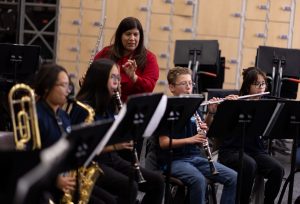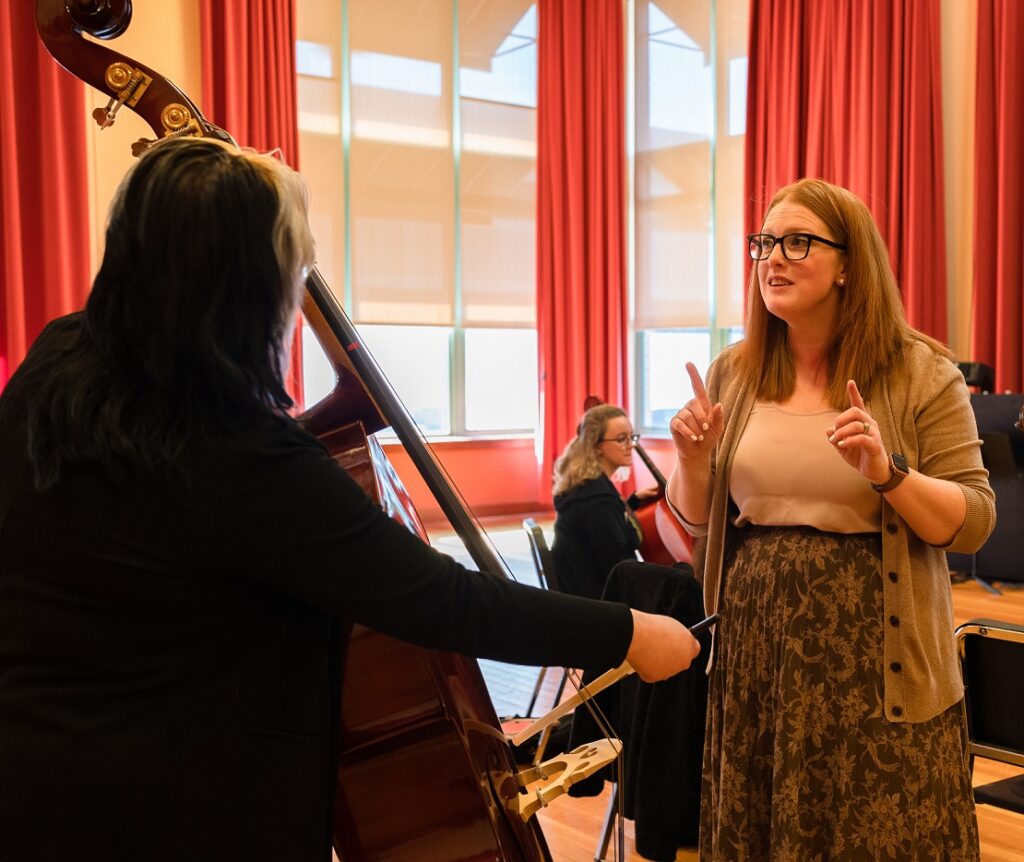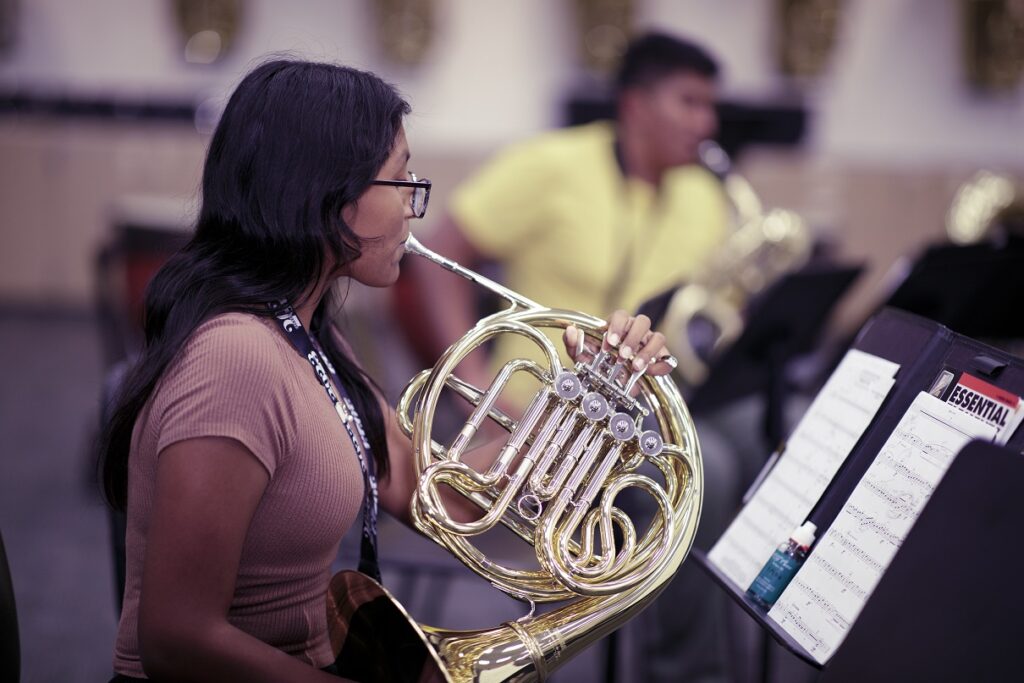Proactive, Reactive and Restorative Disciplinary Measures
Understanding why kids misbehave is complex and challenging. Here are some tips on the best ways to handle disciplinary matters.
Teacher to a random student in the hallway: “Please take your hat off!”
Kid: “No.”
After standing there dumbfounded for a few seconds, the teacher thinks, “… Well, what do I do now?”
Being a teacher today does not come with an automatic status of respect. In fact, like it or not, we must prove ourselves and our position more and more.
Here is yet another multi-leveled task with options. You can:
- Ignore it now and deal with the repercussions later.
- Earn the respect of the students and just worry about ourselves.
- Earn the respect of the students and then use this new relationship to teach them how the world works, in turn allowing them to have a better educational experience and teaching them strategies to work in new environments.
Click here to see PROACTIVE disciplinary measures.
Click here to see REACTIVE disciplinary measures.
Click here to see RESTORATIVE disciplinary measures.
THE YAMAHA EDUCATOR NEWSLETTER: Sign up to receive real-world advice, tips and instrument guides!
Why Do Kids Misbehave?
Teachers should not excuse behavioral issues, but we may benefit from understanding where the students or even the behavior stems from. Many of us may ask, “How could someone act like this?”
Always remember that this isn’t personal. Most kids do not start their day premeditating how they will make your life difficult. There are a multitude of reasons that student behavior may not meet your expectations.
I’ve worked in many districts, including those in low-income and underserved areas. These students are often perceived to have a higher instance of behavioral issues. Depending on the grade level you teach, you may be dealing with students who haven’t been supported throughout their lives. Exposure to toxic stress and a lack of proper support may have negatively affected their learning and behavior. Oftentimes, negative behavior may be due to a lack of coping skills, misdirected anger, and instances of students not getting other educational and social-emotional needs met in the proper way.
We can focus on the why but it’s more productive to address the issues at hand to ensure that the right action is taken to foster a healthy and safe environment for everyone.
What Doesn’t Work
 Quick Fixes: I’ve found that quick fixes don’t usually work long-term. We could yell, threaten discipline, pile on false or excessive praise, let too much slide, be too harsh or ignore the problem. These tend to be Band-Aids at best and will sow seeds of discontent at worse.
Quick Fixes: I’ve found that quick fixes don’t usually work long-term. We could yell, threaten discipline, pile on false or excessive praise, let too much slide, be too harsh or ignore the problem. These tend to be Band-Aids at best and will sow seeds of discontent at worse.
Inconsistency: On the other side of the coin, we may try alternative approaches, but we just don’t stick with them long-term. The inconsistency of disciplinary approaches creates a confusing and even unfair environment that students can’t rely on.
“Should” Statements: Another approach that does more harm than good are “should” statements. Simply put, when we state that something “should” work a certain way (this student should know how to behave, the school should support my way of thinking or this content should be easy for you), we are denying reality and setting ourselves up for disappointment or even failure. Here are some other common “should” statements.
- Kids should just behave for teachers. (Not all of them will).
- Parents should understand how hard we are working and support us. (Not all of them will.)
- I shouldn’t have to worry about absolutely everything! (Maybe that’s true).
How it “should” be won’t happen without some work. So how do we get it to work? I like to think of respect and discipline measures falling into three categories: proactive, reactive and restorative.
Proactive Measures
Rules and Guidelines: If you took an inventory of your rules and guidelines, would they make sense to everyone involved? I often find that young teachers either have far too many rules or very little guidance offered in terms of classroom management. For those with too many rules, remember that students must be allowed to solve their own problems. If they’re missing a piece from their choral folder and can find another original on their own without distraction, let them take care of the job. Too many rules can paint you into a corner, create more work and shift the class focus from music-making and consumption to strict compliance.
On the flip side, too few rules can backfire — and not just in your classroom. The “cool” teacher who allows students to break district rules undermines the rest of the faculty and sends the wrong message to students that we don’t all have to follow the rules. These teachers make it especially difficult for newer teachers or teachers who are not as comfortable with confrontation. Everyone’s job becomes harder when you hear that “Mr. or Ms. So-and-So let’s me put my feet up on the desk!”
Building Relationships: Negative associations with teachers or authority figures may cause a student to be leery or even antagonistic. Have an honest conversation with the student. We should address disrespect but consider telling a student that you will be working hard to earn their respect. This could be the start of restoring a student’s relationship with educators and education.
Ask or observe, but don’t assume: Getting in trouble for something that you didn’t do feels terrible. Furthermore, educators must work to reduce bias and stereotypes. Implicit and explicit bias is linked to disparities in punishment for students of color. Of the two, explicit bias (conscious thoughts and attitudes toward someone or a group) has a more significant impact on discipline disparities.1
Give Kids a Chance: I’ve certainly blown my chance at first impressions multiple times. I was very grateful when people gave me second and third chances. If another teacher warns you about a student, thank them for the comments and information. Allow the student to create a first impression with you. Some students react differently to different teachers and settings. Avoid characterizing students by their older siblings’ or parents’ actions.
 Understand Resources: Understand the resources available within your school. Education loves acronyms, and it can be confusing to keep BHT (Behavioral Health Team), BIP (Behavior Intervention Plan) and BMP (Behavior Management Plan) straight. However, speaking with your guidance counselors and social workers about possible resources for students in need can help you react quickly and effectively. We don’t have to do it alone, and — gasp! — someone else might be better equipped than you to help a student’s situation!
Understand Resources: Understand the resources available within your school. Education loves acronyms, and it can be confusing to keep BHT (Behavioral Health Team), BIP (Behavior Intervention Plan) and BMP (Behavior Management Plan) straight. However, speaking with your guidance counselors and social workers about possible resources for students in need can help you react quickly and effectively. We don’t have to do it alone, and — gasp! — someone else might be better equipped than you to help a student’s situation!
Don’t Waste Time / No Free Days: People don’t like having their time wasted, including students. My band knows that I give no free time or days off. We play every single day. We play the first day of school, the day after concerts and even right up to the last day of school. Consistency helps reduce the dreaded “are we playing/learning today?” question. I also want our groups to be “caught” doing the right thing. These set routines create structure for some students who lack this at home. Commitment to our time goes for low attendance days and rehearsals as well. If three out of 20 kids in a jazz ensemble show up, we can still teach. We may have to adapt significantly, but we need to show students that their time and commitment is valuable. There is always something to teach.
Reactive Measures
Now let’s say that you put multiple proactive measures in place, but something still happens. Or, a student approaches you for assistance with a social-emotional or physical health and safety issue. We can consider some reactive measures to ensure that our approaches are effective and that our classroom remains respectful and safe for all learners. Listed below are a few items for consideration that may fall under reactive measures.
 Escalation / Everyone Loses: Avoid escalating the situation. Some students may feel like they have nothing to lose. For their sake and yours, avoid escalating and arguing. Not saying the first thing that comes to your mind or saying nothing at all could be helpful in stressful situations. Listening is always an effective strategy. Everyone loses when the teacher and student lose their cool.
Escalation / Everyone Loses: Avoid escalating the situation. Some students may feel like they have nothing to lose. For their sake and yours, avoid escalating and arguing. Not saying the first thing that comes to your mind or saying nothing at all could be helpful in stressful situations. Listening is always an effective strategy. Everyone loses when the teacher and student lose their cool.
Planning for Tough Situations: Plan for security options, if necessary. Some students may get to a point where they may harm themselves or others. Address these situations swiftly and effectively. If you’re not sure who to call to assist in breaking up a fight or similar situations, ask your head of discipline. People who are in charge of discipline and safety may be a dean or, at a smaller school, a principal or assistant principal.
Negotiations / Gray Areas: Sometimes, you may have to live in gray areas. Sleeping in class may require specific disciplinary action. However, some teachers may not feel comfortable doling out this punishment if they know that a student is working late at night or doesn’t have much support at home. You may determine that certain situations need some leeway. However, make sure that you are not undermining consistency.
Wait to React: You can also choose not to react. If it’s a small issue that’s going to derail things, opt to leave it alone or wait to deal with the issue. If a student is messing around and distracting others from learning, I ask them to see me after class. Why? Often, it’s because I don’t know what to do right at the moment, but I know I don’t want to distract the class anymore. I get annoyed by this behavior, but this buys me time to get myself in check and ask the student if everything is OK before addressing the behavior.
Restorative Measures
When something breaks, we have to fix it or possibly rebuild it. This can include relationships. If we’re wrong, we must apologize. Not just to model the correct behavior, but to show that value and respect are important.
We can revisit rules and guidelines. Things change. If we feel locked into a guideline that just isn’t necessary anymore, talk it over and agree on change or deletion.
When we have a negative encounter with a student, we can make efforts to learn more about the student, including their background and history. Knowing our students on a deeper level can help us take the next steps to repair the relationship.
 We can consider restorative practices in our classroom (my go-to resource is The Restorative Practices Handbook for Teachers, Disciplinarians and Administrators by Bob Costello). These approaches can go a long way toward addressing accountability and rebuilding relationships.
We can consider restorative practices in our classroom (my go-to resource is The Restorative Practices Handbook for Teachers, Disciplinarians and Administrators by Bob Costello). These approaches can go a long way toward addressing accountability and rebuilding relationships.
Doing Too Little: Let too much slide, and you quickly lose control of your classroom, you lose respect, and other students feel like they are wasting their time. Some students may even call you out on this, and it’s never a good feeling to be called a pushover by anyone. Student autonomy should not be confused with a lack of structure. If anything, there may be more systems in place, but the arrangements are precise, valuable and efficient for the learning environment. Acknowledging that small issues may lead to more significant problems is an essential part of effective classroom management.
False or Excessive Praise: Sometimes we might try to make students feel good by giving them false praise. False or excessive praise can be a manipulative strategy. Instead of recognizing a student for a legitimate ability or work ethic, we tell the student how we would like them to be. Students will pick up on false praise and contrived accomplishments.2 Some students may get the message that you think they cannot achieve what you are praising. It’s OK to speak with students with respect and careful honesty. “Many educators view positive reinforcement as a good thing, as when offering praise to students, but J. Martin Rochester (in the book, ‘Class Warfare: Besieged Schools, Bewildered Parents, Betrayed Kids and the Attack on Excellence’) argued that its overuse leads to overtly extrinsic, manipulative learning.”3
We want to encourage students to consider the long-term effects of music education. An immediate and empty reward or stimulus creates a conditional relationship that may not be sustainable for our lifelong learning goals.
Being Inconsistent: Rules or guidelines that are difficult to enforce can cause inconsistencies in classroom management. If a teacher does not follow through with a planned action to a reaction, the teacher may be showing that:
- They do not agree with the rule.
- They consciously or subconsciously favor one student over another.
- They believe that there is a gray area and that discipline should be handled on a case-by-case basis.
- They fear retribution from the student, the class, parents or administration. Said retribution could be as simple as “the student no longer likes me” up to fear of parent backlash.
If you find yourself in areas of inconsistency, consider whether the policy or guideline is appropriate for your class or program. Implicit biases may also affect consistency. Asking why we reacted in a certain way can lead to a better understanding of ourselves and our students.
Being Rigid / Too Harsh: Here’s my hypocrisy showing again. I just talked about inconsistency, but I don’t believe that rigidity is the antonym to inconsistency. The zero-tolerance policies that became popular in the 1990s didn’t improve student safety and school climate.4 Strict and harsh punishments harmed students, especially minority students.5 Harsh penalties, such as suspensions and expulsions, increase the dropout rate. If a student breaks a minor rule, consider the fine details that accompany the offending action. Extenuating circumstances may guide you toward different timing or pursuing another type of conflict resolution.
 Not Admitting Mistakes / Not Apologizing: One of my favorite things about growing up in a low-income area and teaching low-income students is the honesty. Remember, some of our students may be living with adult responsibilities at home. Some won’t hold back on letting you know if you’re wrong in delivering content or mistreating someone. Once, in front of the whole ensemble, I got after a kid for missing a rehearsal. The student getting the reprimand didn’t say anything, but another student did.
Not Admitting Mistakes / Not Apologizing: One of my favorite things about growing up in a low-income area and teaching low-income students is the honesty. Remember, some of our students may be living with adult responsibilities at home. Some won’t hold back on letting you know if you’re wrong in delivering content or mistreating someone. Once, in front of the whole ensemble, I got after a kid for missing a rehearsal. The student getting the reprimand didn’t say anything, but another student did.
“Hey, Mr. Stinson,” this student said. “This is between you and him. Don’t bring his stuff up in front of all of us.”
And you know what? He was right. I spoke to the student after class about the rehearsal. I also apologized to him for not allowing him some dignity in front of the class. With his permission, I reiterated this apology to the group and thanked the other student for standing up for his classmate.
Teachers can make mistakes and be wrong in delivering content and classroom management. It is not weak to admit to mistakes. Apologizing to students and parents is treating people with dignity and respect or restoring a relationship when a situation like the one above occurs.
Don’t Give Up on the Student: Some of our students have already experienced significant trauma in forms of parental separations or uncertain financial situations. The added stress of a teacher or trusted mentor writing the student off can have profoundly adverse effects. Psychologist Martin Hoffman suggests that withdrawing love or support has a lot in common with more severe forms of punishment.6 He suggests that the withdrawal of love through timeouts, walking away or ostracization pose threats of abandonment or separation. 7
Some students can be challenging, and there are times where people need a break from each other. Evaluate your relationships with the student to communicate this effectively. “I’m not giving up on you; I just need some time to figure out how to give you what you need” is a more effective and humanistic approach than the silent treatment.
What’s A Good Starting Point? Model the Behavior You Want to See.
 You guessed it: We must walk the walk. Students will absolutely call out hypocrites! Modeling what you consider to be the right behavior is easier said than done. What do I want from my students?
You guessed it: We must walk the walk. Students will absolutely call out hypocrites! Modeling what you consider to be the right behavior is easier said than done. What do I want from my students?
- I want them to be focused in class by not multitasking or having phones out.
- I want students to be respectful of me and one another in class.
- I want students to be consistent, including being on time, having materials out and participating.
- I want students to complete assignments to the best of their ability and in a timely manner.
This sounds cut and dry, but I urge teachers who may be struggling in this area to take a look at their own actions and procedures before taking other actions. A friend of mine observed a very well-known marching band’s rehearsal. It was November and freezing out. My friend noticed the thermostat was off in the press box and asked the director if they could turn the heat on. The director’s response? “If the kids are cold, I’m cold.”
How do we model respect to our students? I occasionally have students who are disrespectful by talking back or getting loud. My response is always the same: “I understand you’re upset right now, but do I talk to you like that?” This usually gets us to a common ground where we can actually talk about the issues at hand. The first one to lose their cool is often the one who puts themselves in a more difficult situation.
It Can’t Just Stop with Us
 Building a relationship with a student and teaching them to respect us is not the end point. If we stopped there, we would be giving the student an unrealistic view of the world — that they only need to adhere to certain rules, guidelines and norms to the people who put significant effort into them. Schools are trying their best to create individualized education programs for every student, and although I applaud these efforts, conformity and social norms are not always a bad thing. People achieve more by working together.
Building a relationship with a student and teaching them to respect us is not the end point. If we stopped there, we would be giving the student an unrealistic view of the world — that they only need to adhere to certain rules, guidelines and norms to the people who put significant effort into them. Schools are trying their best to create individualized education programs for every student, and although I applaud these efforts, conformity and social norms are not always a bad thing. People achieve more by working together.
So, once the kid is on “our side,” the job is just beginning. We now have that student’s attention, and we can be the ones to guide and encourage them to give other teachers who they may not like as much a chance, or to work together with a group they normally wouldn’t work with. We can share our struggles and let them know that sometimes we do have to work with people we didn’t agree with or even liked, but that our goals were more important than our egos and perceptions of others. We can teach students that we need self-respect to stand up for ourselves, but that we can also give people a chance to help us instead of assuming that we can’t trust them.
1Morrison, Nick. (2019, April 5). “Black Students “Face Racial Bias” In School Discipline.” Forbes.com.
2Kohn, Alfie. (1999, 2018). “Punished by Rewards: The Trouble with Gold Stars, Incentive Plans, A’s, Praise, and Other Bribes” (2nd ed.). Boston, M, Houghton Mifflin.
3 Rochester, J. Martin. (2004). “Class Warfare: Besieged Schools, Bewildered Parents, Betrayed Kids and the Attack on Excellence.” San Francisco, CA, Encounter Books.
4 American Psychological Association Zero Tolerance Task Force. (2008). “Are zero tolerance policies effective in the schools?: An evidentiary review and recommendations.” American Psychologist, 63(9), 852–862.
5 Thompson, K. (2018, January 18). “Zero-Tolerance Policies and the School to Prison Pipeline.” Shared Justice.
6 Hoffman, M. L. (1970). “Conscience, Personality, and Socialization Techniques.” Human Development, 13(2), 90–126.
7 Hoffman, M. L. (1975). “Moral internalization, parental power, and the nature of parent-child interaction.” Developmental Psychology, 11(2), 228–239.


















